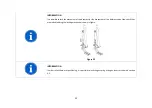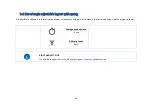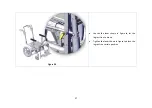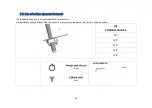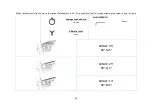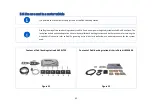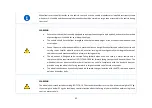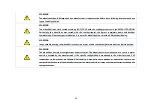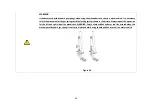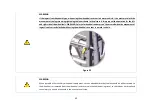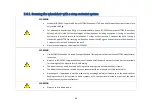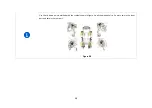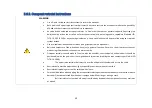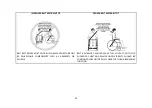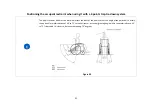
49
3.6.2.
Occupant restraint instructions
WARNING
•
Use a 3-point occupant restraint system to secure the occupant.
•
Both pelvic and upper torso restraint belts must be used to restrain the occupant to reduce the possibility
of head and chest impacts with the vehicle components.
•
Any wheelchair anchored occupant restraint i.e. 3-point belt, harness or postural supports (lap straps, lap
belts) should not be used or relied on for occupant restraint in a moving vehicle, regardless if labeled ISO
7176-19, SAE J2249 or any other equivalent one. Use a vehicle anchored and certified occupant restraint
system instead.
•
Use a suitable positioned headrest when being transported in a wheelchair.
•
Belts and harnesses of the wheelchair have just a postural function. Never use them to protect the user
when using the wheelchair as a seat in a motor vehicle.
•
Occupant restraints should make full contact with the shoulder, chest and pelvis and pelvic belts should be
positioned low on the pelvis near the thigh-abdominal junction (meeting the requirements specified in ISO
7176-19:2008).
•
The upper torso restraint belt must fit over the midpoint of shoulder and across the chest
•
Restraint belts must be adjusted as tightly as possible consistent with user comfort.
•
Restraint belt webbing must not be twisted when in use.
•
Care should be taken when applying the occupant restraint to position the seatbelt buckle so that the release
button will not be contacted by wheelchair components while driving or during a crash.
•
Belt restraints must not be held away from the body by wheelchair components such as armrests
or wheels.
Содержание DYNA
Страница 1: ...DYNA USER MANUAL 2021 07...
Страница 2: ......
Страница 20: ...4 E D...
Страница 26: ...10 POS B POS C...
Страница 27: ...11 POS D POS E...
Страница 29: ...13 FIXED BACKREST With the fixed backrest there are only 4 screws per side Figure 11...
Страница 92: ...76 5 1 Drawings A C B E H J G K...
Страница 98: ...Note...
Страница 99: ......
Страница 100: ......

